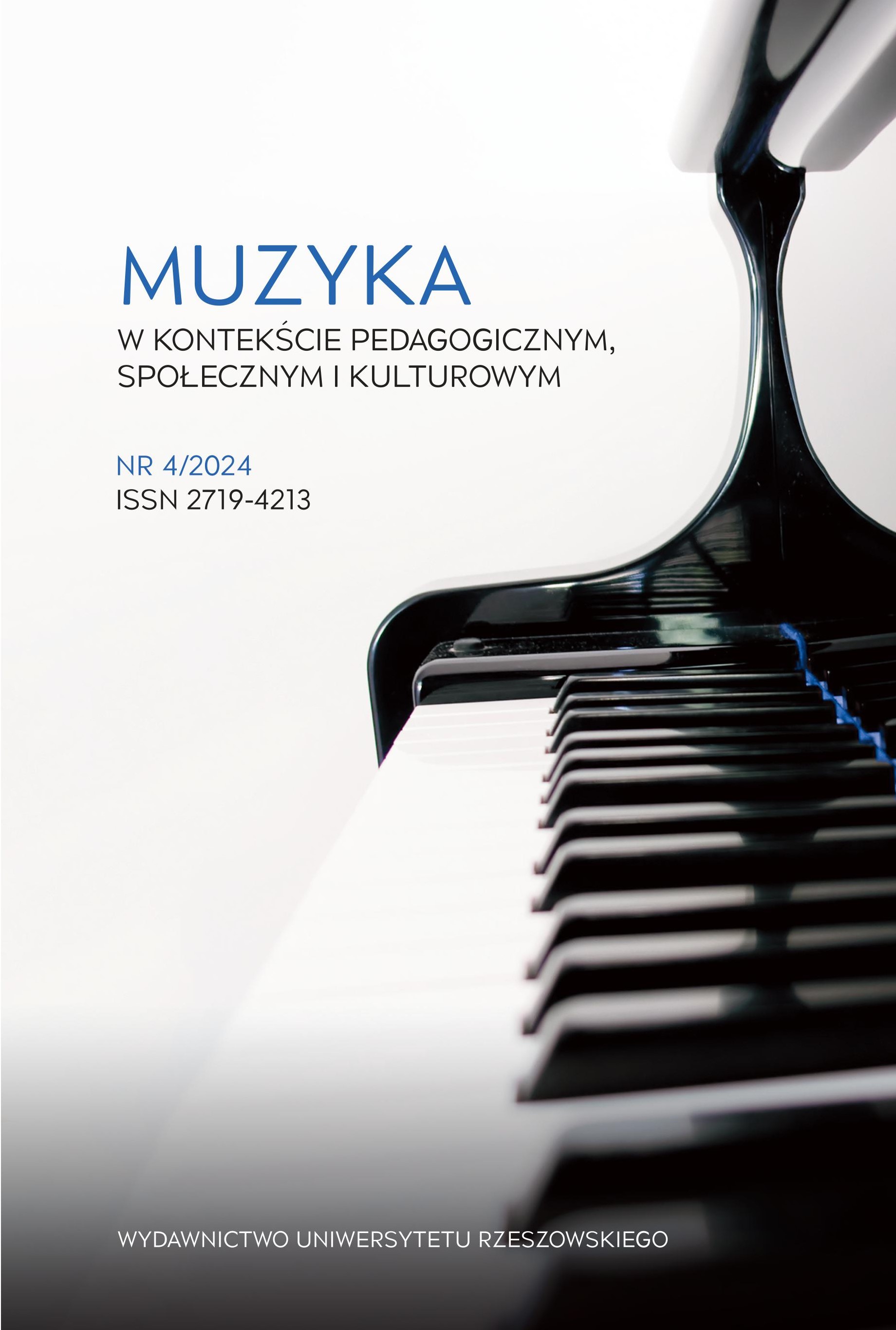Translating an Operatic Libretto: The Status and Role of an Interpreter. Cognitive Linguistics in the Interpretation and Translation of Stage Directions – a Case Study
DOI:
https://doi.org/10.15584/muzpsk.2024.4.7Keywords:
libretto, stage directions, translation, cognitive linguistics, imageryAbstract
The paper addresses the question of the translation of an operatic libretto and examines the status and role of a libretto’s interpreter in the creative process of opera production. The author also mentions the role of a dramaturge in the opera theatre and indicates certain similarities between the functions of the dramaturge and that of the interpreter. The paper refers to cognitive linguistics as a useful method in the examination of a translated text. The author, inspired by works of the Polish linguist and interpreter Elżbieta Tabakowska, draws on the key term present in cognitive linguistics (imagery) and its aspects, such as prominence (trajector/ landmark), elaboration (granularity/ resolution), and focusing (foreground/ background), applying them to a short analysis of the stage directions from the libretto of Giacomo Puccini’s one-act opera Suor Angelica.
References
Korwin-Piotrowska Dorota, Powiedzieć świat. Kognitywna analiza tekstów literackich na przykładach, Kraków 2006.
Lakoff George, Women, Fire, and Dangerous Things: What Categories Reveal About the Mind, Chicago 1987.
Langacker Ronald, Foundations of Cognitive Grammar, Volume I, Theoretical Prerequisites Stanford, California 1987.
Langacker Ronald, Gramatyka kognitywna. Wprowadzenie, Kraków 2009.
Puccini Giacomo, Il Trittico. Il tabarro, Suor Angelica, Gianni Schicchi. Libretti, ed. Eduardo Rescigno, Milano 2004.
Suor Angelica (Sister Angelica). Opera in One act. Music by G. Puccini. Italian libretto by Giovacchino Forzano. English version by Edoardo Petri, New York1918.
Tabakowska Elżbieta, Językoznawstwo kognitywne w teorii i praktyce przekładu: oleodruk i symfonia na dwa fortepiany [in:] „Między oryginałem a przekładem”, t. I, ed. J. Konieczna-Twardzikowa, U. Kropiwiec, Kraków 1995, p. 31-42.
Tabakowska Elżbieta, Myśl językoznawcza z myślą o przekładzie. Wybór prac, ed. P. de Bończa Bukowski, M. Heydel, Kraków 2015.
Targoń Joanna, Wirus, strażnik, negocjator, partner, „Didaskalia - Gazeta Teatralna”, nr 2, 30. 06. 2007, [Online] Available from: http://www.e-teatr.pl/pl/artykuly/ 128524, druk.html. [Accessed: 13th November 2023].
Tokarz Bożena, Kognitywne możliwości przekładu artystycznego, [in:] Przekład artystyczny a współczesne teorie translatologiczne, ed. P. Fast, Katowice 1998, p. 73-81.
Tokarz Bożena, Przekład w dialogu międzykulturowym [in:] Dialog czy nieporozumienie, eds. Piotr Fast, Przemysław Janikowski, Katowice 2006, p. 7-19.
Tomaszkiewicz Teresa, Przekład audiowizualny, Warszawa 2008
Downloads
Published
Issue
Section
License
Copyright (c) 2024 Muzyka w Kontekście Pedagogicznym, Społecznym i Kulturowym

This work is licensed under a Creative Commons Attribution-NonCommercial-NoDerivatives 4.0 International License.


